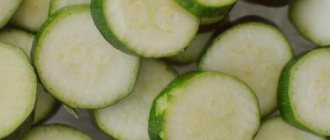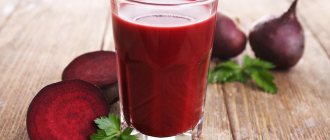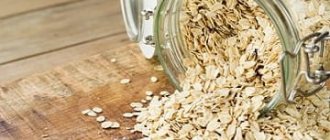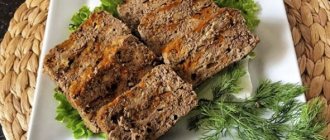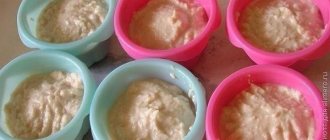Zucchini is a healthy vegetable that should be on a child’s menu starting from the age of six months. You can cook many delicious dishes from it using the recipes from the article.
Even if the child is breastfed, from a certain time additional foods need to be introduced into his diet in order to provide the small growing and developing body with the substances it needs. The basic rules for introducing complementary foods are as follows:
- the least allergenic product is selected, and these are broccoli, zucchini, cauliflower, potatoes, pumpkin, carrots, etc.
- Only one product is introduced and you need to monitor how it is absorbed by the baby
- the product is administered starting with the smallest doses, which are then gradually increased
- the period between the introduction of one product and the next should be at least a week or two
One of the first things you can introduce into your baby’s diet is zucchini.
What are the benefits of zucchini during complementary feeding?
Zucchini contains a lot of minerals and vitamins, and it is well absorbed by infants, practically without causing allergies.
Zucchini is the first vegetable for feeding children.
IMPORTANT: The most basic microelements that zucchini will saturate the child’s body with are iron and zinc
Zucchini also replenishes the baby’s body with balance:
- proteins, fats and carbohydrates
- vitamins B, A, C, PP
- unsaturated fatty acids
- mono- and disaccharides
- in addition to iron and zinc - magnesium, potassium, calcium, sulfur
A small body needs both dietary fiber and organic acids, which zucchini is rich in.
How and when can it be introduced into complementary foods?
For the first 4-6 months of life, children are fed breast milk and/or an adapted formula.
Then standard products are introduced into the diet. Pediatricians recommend starting complementary feeding for children who are prone to constipation with zucchini. They are easily absorbed and digested and do not create a large burden on the digestive system. They contain vitamins B, A, K, E, C, as well as trace elements magnesium, potassium, copper, phosphorus, and iron.
These substances ensure the maintenance of the balance of water and salt in the body. The vegetable has general strengthening, antianemic and choleretic properties. It also has a beneficial effect on heart function, the condition of nerve and muscle fibers, and cerebral circulation. Moreover, the product is hypoallergenic.
Artificial children can be given zucchini from the age of 4-5 months. Breastfed babies should introduce vegetables into their diet from six months. Many young, inexperienced mothers do not know how to prepare zucchini for feeding their baby.
Rules for introducing vegetable crumbs into the diet:
- For the first time, give the product in a minimal amount (half a teaspoon) and observe the reaction of the baby’s body. If diarrhea, flatulence, rashes on the body and other negative reactions do not occur within two days, then the single serving can be gradually (over the course of a week) increased to 170 g;
- Offer zucchini to the child before taking mother’s milk or an adapted formula;
- It is better to give a new product in the first half of the day;
- Vegetables for complementary feeding must be freshly prepared. It should be offered to the baby warm;
- the dish for the first feeding should be one-component.
Zucchini, like other foods, should be introduced into complementary foods provided that the child has not suffered any illnesses or vaccinations over the past two weeks.
From how many months can you give your baby zucchini?
Currently, pediatricians and experienced mothers following their advice have not come to a consensus on the age at which complementary foods, including zucchini, should be introduced to infants.
If earlier, pediatricians said that complementary feeding can be introduced from 3 months, then the current generation of doctors is pushing this period for complementary feeding from 4, or even 6 months.
Zucchini is given to babies aged 4-6 months.
IMPORTANT: It all depends on the child’s individual development, on the method of feeding him (breastfeeding or bottle feeding), on whether the little one had or has tummy problems. In any case, the period is indicated - from 4 to 6 months, your doctor will tell your child more precisely
Rules for choosing zucchini
All varieties of zucchini, including zucchini, are healthy and allowed for children. The main thing is that the vegetable is of high quality and safe. It’s good if you have your own garden bed where zucchini grows. You can be sure of the quality of such a product.
Vegetables sold at markets and supermarkets are often stored in inappropriate conditions. Therefore, there is a risk of purchasing a damaged product. When growing, out-of-season greenhouse zucchini is fertilized. Such a product can be dangerous to the health of the baby. It is important to know the rules for choosing quality zucchini.
Experts advise paying attention to the following when purchasing:
- freshness _ The vegetable should be firm, without rotten areas. It is important that pressure does not leave any dents;
- size . You should not take fruits that are too large. They may contain fertilizers, be overripe;
- appearance. The peel of a quality product is shiny, without scratches or cuts. Uneven color is allowed;
- degree of maturity . When feeding a baby, you should give preference to young zucchini. They have juicier and more tender flesh.
How to cook zucchini for baby's first feeding and how long to cook it for baby puree?
For the first feeding, it is best to give your baby zucchini juice. Zucchini contains a lot of moisture, and squeezing the juice out of it is not difficult. For this:
- zucchini needs to be washed
- cut a piece from it
- to peel
- grate and squeeze through cheesecloth
You can do this through a juicer.
You can give your baby zucchini juice as complementary food.
IMPORTANT: Zucchini juice should be given to your baby immediately after you have squeezed it. You should not store such juice in the refrigerator; you need to prepare a new one each time, because its beneficial qualities are most active during the first 15–20 minutes after squeezing.
Zucchini juice has a neutral taste. As a rule, children perceive it well. Zucchini juice helps increase appetite, so it is recommended to give it 15–20 minutes before the start of the main feeding. The first dose of zucchini juice is no more than half a teaspoon. With normal absorption, the dose is increased daily.
After you have tried zucchini juice and it has become part of the baby’s diet, you can prepare zucchini puree.
RECIPE: Zucchini puree for first feeding
Zucchini puree.
- Select a whole zucchini without blemishes and wash it
- Peel and cut into pieces 1 cm or 1.5 cm thick
- Place in a small saucepan and add water to lightly cover the vegetable.
- Cook for 10 minutes after boiling
- The zucchini quickly becomes soft and is easy to mash into a puree. To make a puree, you can dilute it with the same broth in which the zucchini was cooked, or with milk
IMPORTANT: The puree should not be salted or sweetened.
Alternatively, you can cook the zucchini for puree in a double boiler, also for 10 minutes. Then dilute with milk.
You can also purchase ready-made zucchini puree at baby food stores. However, for the first time, choose that the puree contains one vegetable. Complementary feeding should be started with a teaspoon, gradually increasing its volume. Children from 7 months to 1 year can be given 100 g of vegetable puree per day. You can also give 50 g of puree and 50 ml of zucchini juice for variety.
Zucchini puree from the store.
Zucchini puree for first feeding: recipe for babies
There are not many products on the menu for infants up to one year old that do not cause allergies. Such a dish is zucchini puree for first feeding , the recipe of which is simple and allows you to combine it with other vegetables.
Beneficial features
Children should be given zucchini puree as their first meal at the age of 4 months. The vegetable product is easily digestible and is not an allergen.
Zucchini is a healthy vegetable because it contains a number of nutrients necessary for the growth and development of a child. This vegetable product helps eliminate any allergic reactions caused by other vegetables or fruits.
Potassium and sodium contained in zucchini have a beneficial effect on the immune and nervous system of the baby.
The main benefit of the vegetable is the presence of vitamin C in it, which helps protect babies from colds. Zucchini puree is an excellent remedy for constipation; taking it normalizes digestion and eliminates colic. Zucchini is a light food that does not overload the stomach. The benefit of pectins is excellent absorption and removal of excess fluid from the body.
Despite the variety of zucchini varieties, the white-fruited variety is better suited for babies first. And since the children's diet excludes the use of salt and sugar, these components should not be added to zucchini puree - it itself has a pleasant sweetish taste.
Recommended Servings
The first complementary feeding for a baby is best done in the form of vegetable puree. If the mother gave fruit mixtures as the main dish, which have a richer and sweeter taste, then the child may not accept vegetable puree.
The first zucchini feeding should not exceed a portion of ½ tsp. It is better to give zucchini puree in the morning to monitor the baby’s health after introducing a new vegetable into the diet.
The volume of zucchini complementary foods should be increased if the child tolerated zucchini well. The serving should ultimately be 100 g. Gradually, you can combine zucchini with other vegetables, but the introduction of such dishes into the children's diet requires an interval of 5-7 days.
Preparing puree for the winter
In autumn and winter, zucchini puree can be bought in a ready-made state in the store, but often such products can contain bacteria as a result of long storage and transportation.
In order for your child to receive healthy food, it is recommended to independently prepare a valuable vegetable - zucchini - for the winter. It should be washed, cleaned, and the seeds removed from inside.
Cut the vegetable into medium cubes, put in a bag and freeze.
To prevent the cubes from being compressed into one lump, the best option is to make the preparation in bags for one serving. Quickly frozen homemade vegetable cubes will not lose their beneficial properties. When you need to prepare puree for the first time, take them out of the freezer and steam them.
How to make zucchini puree?
You can cook zucchini in different ways: for this you can use a double boiler or a slow cooker. How to make zucchini puree for babies? Dishes should not contain spices or fat.
For a baby, a serving of ⅓ or ¼ of a vegetable is suitable. To make food easier to digest, small children are served a first course of zucchini, chopped in a blender. After the baby teethes (this happens at about 8-11 months), it will be enough to mash the cooked healthy zucchini with a fork.
The process of preparing a meal for a baby
The zucchini must be thoroughly washed, peeled, and seeds removed. Cut into small cubes and cook in boiling water. When ready, remove from the pan and bring to a mushy state. To make the zucchini puree liquid, it is diluted with breast milk. Feeding zucchini should be in medium portions; the dish can be prepared in boiling water. The liquid should barely cover the vegetable cubes.
Zucchini is good not only as a first complementary food, where it is served in chopped form without extraneous vegetables. You can use it to make another equally delicious homemade dish. An infant can eat cream soup, vegetable stew, caviar, pancakes, and ketchup for porridge.
Zucchini dishes for children under one year old
RECIPE: Zucchini puree with cottage cheese
Zucchini puree with cottage cheese.
This dish can be prepared for a baby starting from the age of 8 months.
- Boil a young, washed and peeled zucchini for 5 minutes (if the zucchini is more mature, you will have to cook for 15 minutes)
- Add 2 tbsp to the boiled zucchini. spoons of cottage cheese and mix with a blender until pureed
The remaining mass can be offered to adult family members by adding salt, garlic, and dill. Make a delicious and healthy snack. RECIPE: Zucchini and rice porridge for babies from 8 months
- Zucchini and rice porridge.
- Boil the zucchini and rice (in the traditional ratio of 2 water: 1 rice)
- Mix in a blender, dilute with vegetable broth
RECIPE: Vegetable puree from zucchini, carrots and potatoes for babies from 6 months
Vegetable puree from zucchini, carrots and potatoes.
- Peel, wash and boil vegetables: half a potato, half a carrot, a piece of zucchini
- Add the zucchini for cooking 5 – 7 minutes before the end
- Push the cooked vegetables in a blender or through a sieve
- You can add a little olive oil or butter on the tip of a knife to the puree
The ingredients for vegetable puree can be changed. For example, it would be nice to add broccoli and/or cauliflower to it.
Instead of puree, you can make soup with the same ingredients. RECIPE: Zucchini soup with meat
Zucchini soup with meat.
Starting from 9 to 10 months, the child can be given soups or purees with zucchini, other vegetables and meat (veal or turkey).
- Boil the meat and the zucchini separately
- Then mix both ingredients in a blender and dilute with vegetable broth
- You can add a little oil for taste
Advice: For children starting from 9 - 10 months, you can try giving well-cooked and soft vegetables in small pieces, and not just in the form of puree. The child must get used to the chewing process.
How to make zucchini puree for a child with your own hands
The health of a baby in infancy is too vulnerable, and in order to preserve it, the infant menu must be composed of the simplest products.
In order for the baby to develop normally, pediatricians advise giving him baby zucchini puree, purchased or prepared independently at home. In order for the first dish in a toddler’s life from the “adult” menu to be tasty and healthy, it must be made from the freshest vegetables grown without “chemicals”.
Do-it-yourself zucchini puree - useful savings
Zucchini pulp has a pleasant taste and is perceived by most kids with great enthusiasm. Homemade zucchini puree for a child is the first complementary food in his life, which begins an exciting acquaintance with the adult world of gastronomy, so the quality of the dish is of great importance.
To save time, you can visit the nearest supermarket where there is a baby food section and stock up on jars of ready-made puree. However, there is no guarantee that, having tasted a treat from a jar, which is very expensive, the little one will immediately taste it.
As a rule, in order to determine which baby zucchini puree is best for your beloved son or daughter, you need to try up to a dozen products from different manufacturers. These are additional costs. In addition, there is a risk of purchasing low-quality food.
To reduce it to nothing, it will be useful to learn how to make zucchini puree for a child with your own hands. After all, homemade food always turns out tasty, safe and inexpensive; you can easily feed it to your baby without fear.
How to make delicious zucchini puree for your child: tips for mothers
Adults, spoiled by the widest gastronomic variety, find it difficult to understand what could be tasty in bland vegetable puree. But babies who have never tasted anything sweeter than mother’s milk eat it with pleasure.
Some mothers will object: not all babies like boiled, grated zucchini! Indeed, this is a matter of taste, which begins to develop just at the age of the first complementary foods.
To prevent your baby’s zucchini from being included in the “list of tasteless foods”, you need to know how to prepare zucchini puree for your baby correctly.
Tip 1: Use young white fruits without seeds
As a vegetable raw material for the first portions of complementary foods, it is best to use ordinary white zucchini from your own garden. They must be grown without chemicals. Young fruits, seedless, are an ideal option for children.
Tip 2: Make puree without spices, salt and sugar
When preparing the first portion for your beloved child, you shouldn’t think too much, because sugar, salt and spices are contraindicated for him.
The pulp of selected vegetables just needs to be boiled in water and then turned into a paste in a blender. Treats can only be salted (in small quantities) when the child is already 8 months old. The same goes for sugar.
Tip 3: Every time a new portion
At first, homemade zucchini puree for a baby should be prepared according to the simplest classic recipe, and you only need to make a little of it each time, because baby food cannot be stored - it must always be freshly prepared.
The daily portion of zucchini complementary foods for a 6-month-old baby is only 0.5-1 tsp.
There is no clear answer to the question of how to make baby zucchini puree at home. This vegetable for infants is prepared in different ways - it is boiled in water, steamed and baked in a slow cooker.
However, if the baby is very small, very little nutrition is needed, so using a multi- or double boiler is not advisable.
Ingredients
- Zucchini (pulp) – 300 g +
- Purified water – 1 glass +
Add all
to shopping list
Remove everything
from shopping list Shopping list
Classic step-by-step recipe for baby zucchini puree
The utensils we need are a small enamel pan or ladle. It is better not to use aluminum cookware, as it oxidizes strongly.
We use only purified water, or even better, special water for children.
- Having chosen the youngest fruit without cracks or other damage, we wash it in running water and peel off the peel.
- Having filled the saucepan with filtered water, we put the vegetable there so that all possible nitrates that have entered the fruit from the ground are released.
- Now you need to cut the zucchini: the smaller the pieces, the faster the pulp will cook.
- Fill the raw slices with water – it should barely cover the pieces.
- Cook the vegetable over low heat for about 15 minutes from the moment it boils.
- An indicator of zucchini readiness is its softening. After draining the water, cool the pulp slightly, then puree it with a blender. If you don’t have this miracle of technology in your house, you can chop everything with a fork.
If the dish is too thick, we suggest diluting it to the consistency of low-fat kefir with vegetable broth that we have left, or with breast milk.
Frozen vegetables can be cooked in the same way. True, they will cook a little longer.
Homemade zucchini puree with chicken broth in a slow cooker
For a 9-month-old (and older) baby, your favorite vegetable dish can be made with chicken broth.
Ingredients
- Small zucchini – 1 piece;
- Low-fat chicken broth – 1.5 cups;
- Salt – 1 pinch.
How to make baby zucchini puree at home using broth
- Having prepared the vegetable as in the first recipe (washed, cut and placed in a multi-cooker bowl), pour the broth over the sliced squash.
- Add some salt to the dish, close the lid of the unit and, having selected the “Stewing” program in the menu (in some models – “Steaming”), press the “Start” button.
Zucchini dishes for children from 1 to 2 years old
RECIPE: Steamed vegetable cutlets
Vegetable cutlets.
Children from 1 year old can diversify the shape of dishes and the number of ingredients in them. For example, you can make steamed cutlets from zucchini, carrots, cauliflower, green peas and broccoli with semolina.
- Wash and grate vegetables
- Afterwards we lightly simmer them with boiling water, this will soften them and make them easier to crush.
- Lightly salt and add a little semolina to them
- Leave for a while until the semolina swells
- We form cutlets, you can dip them in flour
- Place in a double boiler or steam for 7 – 10 minutes
RECIPE: Zucchini Casserole
Zucchini casserole.
Need to:
- 1 zucchini
- 120 g rice
- 1 egg
- a little salt and herbs
- The rice needs to be boiled, the zucchini washed and grated on a fine grater.
- Stir the zucchini, rice and beat in the egg, add herbs and salt
- Grease a baking dish with oil and place the mixture into it
- Bake in the oven for 30 minutes
How to cook? Healthy recipes
Preparing zucchini for your baby is quick and easy. The vegetable is peeled and seeds removed, washed, cut into pieces and boiled in a small amount of water until soft.
You can check readiness with a fork or knife. The zucchini should be easy to pierce and not fall apart or turn into mush when pressed.
Cooking time depends on the degree of ripeness of the fruit and the size of the pieces. If the vegetable is young, it will be ready 5-7 minutes after the water boils. Ripe fruit may need 15 minutes or more. The boiled vegetable is pureed using a blender or mashed with a fork.
There are many different healthy zucchini dishes. You can make puree, soup, casserole, and cutlets from this vegetable.
Many young mothers don’t know whether to add salt to their baby’s food. Evgeniy Olegovich Komarovsky advises adding salt to dishes no earlier than one year of age.
Puree
Classic zucchini puree is an ideal option for baby's first complementary foods. To prepare it, use about 100 grams of vegetables. The fruit is peeled and cut into small cubes. Dip into water and cook until tender. Grind in a blender until pureed.
If the mass is too thick, then it should be diluted with expressed breast milk or an adapted formula. From 7-8 months of age, you can add a little vegetable oil to your baby’s purees. This increases the beneficial properties of the dish.
You can make a little puree from zucchini and apples. Products must be peeled and seeds removed and cut into slices.
Pour a glass of water into the multicooker. Place pieces of fruit and vegetables in a steamer basket. Select the “steaming” mode and set the time for 15 minutes. You can simply boil the ingredients in a pan of water. The finished ingredients should be transferred to a blender container and blended until smooth.
From the age of eight months, you can offer your baby tender vegetable puree. To prepare it you will need half a zucchini and carrots, two medium potato tubers, a teaspoon of olive oil. Vegetables need to be peeled, washed, cut into pieces and boiled for 20 minutes. Combine the finished ingredients and beat with a blender or rub with a spoon through a sieve. Fill with oil.
Zucchini puree
For a child over 9-10 months of age, you can prepare a dish of zucchini and turkey or chicken fillet. You will need one young vegetable, 50 g of meat and 3 ml of vegetable oil. The zucchini needs to be peeled and seeded, cut into pieces, filled with water and put on fire.
Separately boil the poultry fillet. Combine the finished ingredients and bring them with a blender to a homogeneous puree. Add vegetable oil and stir.
Soup
Soups for complementary feeding should be included in the child’s menu from 7 months, after becoming familiar with vegetables. They are prepared from those products that are well accepted by the child’s body. Recipes for tasty and healthy soups for children are given in the table.
Zucchini cream soup
| Name | Ingredients | Cooking algorithm |
| Zucchini and cauliflower soup |
| Boil the vegetables until tender. Remove them from the water and grind them with a blender or mash with a fork. Dilute with broth to desired consistency. Add butter and stir. |
| Puree soup of zucchini, carrots and potatoes |
| Peel the vegetables, rinse and cut into pieces. Place a saucepan with water on the fire. When the liquid boils, you should lower the carrots, and then the potatoes and zucchini. At the end add chopped herbs. Let the soup brew for half an hour. Remove the vegetables and puree them in a blender. Dilute with broth to desired consistency. Add vegetable oil and stir. |
Casserole
For children over one year old, you can prepare zucchini casserole. You will need a medium-sized vegetable, 150 g of rice, one egg, some fresh herbs. The cereal should be thoroughly washed and boiled.
Chop the greens. Peel the zucchini and remove seeds and grate it on a fine grater. Add rice and herbs to it. Beat in the egg. Add salt and mix. Grease the frying pan with butter.
Pour in the mixture and smooth it out with a spoon. Place in the oven for 25-35 minutes.
Vegetable cutlets
You can prepare vegetable cutlets for your baby. You will need carrots, cauliflower, zucchini, green peas and semolina in equal parts. Vegetables should be washed, peeled and chopped in a blender. Add semolina and add salt. Wait about 15-20 minutes until the cereal swells. Form cutlets, roll them in flour and steam for about 5-7 minutes.
Zucchini dishes for children aged 2 years and older
For children over 2 years old, soups or puree soups with zucchini are prepared in low-fat meat broth. To prepare the soup, vegetables (zucchini, potatoes, carrots, onions, zucchini, cauliflower, etc.) can be boiled separately from the meat broth and then diluted with it, or you can cook in the broth itself.
Children from two years old can be given a variety of zucchini dishes.
The vegetables are cut into small pieces and boiled, adding the zucchini to the cooking last, 5-7 minutes before the end. The finished soup is sprinkled with herbs and lightly salted.
RECIPE: Vegetable stew with zucchini
Vegetable stew with zucchini.
Vegetables that you have in the house will come in handy, namely:
- zucchini
- carrot
- potato
- onion
- eggplant
- tomatoes
- All vegetables, except zucchini, are cut into small cubes and simmered in vegetable oil with a small amount of water or meat broth.
- Sliced zucchini is added to the dish 7 minutes before the end of cooking
- During the process of stewing and stirring, add a little salt to the vegetables.
The benefits of zucchini soufflé for children
Zucchini, well known to everyone since childhood, is a real find if the time has come for your baby to get acquainted with the first vegetable dish. This wonderful, tasty and healthy summer vegetable, in addition to proteins and carbohydrates, is rich in potassium, phosphorus, and calcium.
Its tender pulp contains many vitamins valuable for your baby, including folic acid (B9), which:
- ensures the functioning of the immune system;
- supports normal heart function;
- regulates the synthesis of certain amino acids;
- protects the body from the appearance of malignant tumors;
- participates in the process of hematopoiesis.
Zucchini pulp contains pectins, which have a beneficial effect on the digestion process, but at the same time, it does not contain too much fiber, which can irritate your child’s gastrointestinal tract.
RECIPE: Zucchini pancakes for children
Zucchini fritters.
Zucchini pancakes are a wonderful food for a child, and children eat them with pleasure, especially if they are also flavored with sour cream.
- Grate the zucchini, add 1 or 2 tablespoons of flour, stir and add salt.
- Fry like regular pancakes in vegetable oil
- Serve to baby warm and with sour cream
Chicken pancakes with zucchini
You will need:
- Medium sized zucchini – 1 piece
- Chicken mince
- Egg – 1 piece
- Flour for dough
- Salt to taste
How to cook:
Grate the zucchini.
Mix grated zucchini and minced chicken.
Add flour, egg and salt and form into a dough.
Make pancakes with your hands and bake them in an open frying pan.
This easy zucchini recipe is suitable for children who refuse to eat meat.
RECIPE: Zucchini soufflé for children
Zucchini soufflé.
For example, we prepare a soufflé like this:
- Wash, peel, chop and simmer the zucchini, adding a little water to it
- After 5 minutes, add a teaspoon of semolina and a little milk to the zucchini
- Remove from heat, let stand for a while, and blend the ingredients with a blender.
- When the mixture has cooled a little, beat the egg into it and add a little butter
- Beat again with a blender and send the mixture either to the oven or to a double boiler. You can also make a soufflé in a water bath
The soufflé will be ready in 15 minutes. This is a tasty and tender product. You can salt it during cooking and add a little sugar to it.
How to deliciously cook zucchini for a 5-6 month old baby
At this age, the first complementary food in the form of zucchini puree is introduced into the children's diet. It is water-based - no spices, flavorings or salt!
Ingredients
- White zucchini – 200 g;
- Purified water – 150 ml.
Making zucchini for a 5 month old baby with your own hands
- Wash the fruit thoroughly, as mentioned earlier, clean it and cut it. The finer the cutting, the faster the baby’s complementary foods will be ready.
- Fill with hot water and place on medium heat. Once it boils, cook for another 8-10 minutes.
- We turn the softened pulp into a homogeneous medium-thick puree using a blender or an ordinary table fork.
The norm for one serving for a six-month-old baby is 0.5 teaspoon. If the baby eats the zucchini “delicacy” with pleasure and feels normal afterwards, then the portions can be gradually increased.
From 7 months of age, you can already add a little vegetable oil or butter to vegetable puree.
RECIPE: Zucchini Casserole for Kids
For zucchini casserole for older children, not one-year-olds, in addition to the zucchini itself, rice and eggs, you can also use cheese.
- Boil the rice and let it stand for 5 - 10 minutes
- Grate the zucchini
- Mix rice, zucchini and egg, salt
- Place in a greased pan and keep in the oven at 180 degrees until done.
- A few minutes before the casserole is ready, take it out, sprinkle with grated hard cheese and cook in the oven until the cheese melts
When should children not be given zucchini?
In extremely rare cases, zucchini can cause allergies. In this case, it should be immediately excluded from the diet. At risk are babies with allergic rhinitis caused by pollen from herbs such as wormwood or ragweed. If you notice problems after eating zucchini dishes, be sure to consult a doctor to find out the reasons.
You should not give your child zucchini during periods of exacerbation of ailments associated with the digestive tract, including diarrhea. If your baby has kidney problems, you need to check with the doctor whether this vegetable can be offered to him. Such precautions are due to the mild diuretic effect that zucchini has.
RECIPE: Zucchini cutlets for children
Zucchini cutlets.
- For cutlets, prepare grated zucchini
- Let's give him some time until he lets out the juice.
- Drain the juice and continue preparing the minced meat for the zucchini cutlets.
- To the zucchini you can add carrots (also grated), minced meat (beef or chicken), onions or herbs, feta cheese or squash and an egg
- Mix everything thoroughly, add salt and form cutlets
- The cutlets can be steamed or fried in vegetable oil. After browning, turn the cutlets over to the other side and close the container with a lid.
- Sour cream is served with ready-made zucchini cutlets
When and how can you give zucchini to your child?
- Zucchini can be given to a baby from 4 to 6 months.
- The child is first given zucchini in the morning at about ten o'clock in order to track how the baby reacts to the new dish.
- When the baby gets used to zucchini, you can give it to any meal, but once a day.
- Zucchini is included in the crumbs menu slowly, starting with half a teaspoon, doubling the amount of puree daily.
1st day - half a teaspoon - 2.5 ml. Day 2 - a whole teaspoon - 5 ml. 3rd day - two teaspoons - 10 ml 4th day - four teaspoons - 20 ml 5th day - eight teaspoons - 40 ml 6th day - sixteen teaspoons - 80 ml 7th day - 30 teaspoons - 150 ml
For another week, the child is fed zucchini in a volume of 150 ml once a day and the baby’s reaction is monitored, then the next complementary food can be introduced or other vegetables can be added to the zucchini. The baby is fed with breast milk or formula to the usual amount of feeding.
RECIPE: zucchini caviar for children
Zucchini caviar.
Almost all people love squash caviar, and it can be given to small children starting from 1.5 years old.
- For children we prepare caviar as follows:
- Chop the zucchini and grate the carrots, then lightly fry them in oil and put them in a saucepan
- We simmer the vegetables for about an hour, and the resulting liquid must then be drained
- At this time, prepare the tomatoes - pour boiling water over them, remove the skin and chop finely
- Add prepared tomatoes, salt and herbs to taste to the stewed zucchini and carrots and simmer for a few more minutes.
The ratio of vegetables can be 1: 1: 1 (zucchini, carrots, tomato) or 2: 2: 2, etc.
Zucchini and spinach omelette
You will need:
- Chicken egg – 3 pieces
- Zucchini (young) – 2 pcs.
- Spinach – 50 g
- Green onions – 3 sprouts
- Milk – 50 g
- Salt and pepper to taste
- Sunflower oil (for frying)
How to cook:
Mix eggs, salt, pepper, milk in one bowl. Beat with a spoon or fork.
Cut the spinach into ribbons and the zucchini into slices.
Chop the green onions.
First you need to fry the zucchini.
Grease a frying pan with sunflower oil and fry the zucchini slices on both sides until golden brown.
Then add the spinach to the pan and fry until it has reduced in volume by half.
Pour the omelet mixture over the zucchini and spinach.
Sprinkle green onions on top.
Cover the pan with a lid and cook the omelette for another 10 minutes.
This zucchini recipe is suitable for breakfast or lunch for a child.
RECIPE: Zucchini stewed in sour cream for children
Zucchini stewed in sour cream.
Children can also stew zucchini in sour cream.
- Cook the zucchini as follows:
- Chop and fry an onion in oil
- When it turns golden, add the diced zucchini to it and continue frying, covering with a lid and adding a little water.
- At this time, you can salt the zucchini
- Simmer the zucchini for 10 minutes, then add sour cream and simmer for another couple of minutes.
How can you give
Zucchini is usually the first food a baby is introduced to after milk or formula. He does not yet have teeth, he does not suspect the need to chew food. That is why you should not give your baby pieces of vegetables - he will choke on them. For the first feeding, any product must be ground to a homogeneous puree.
Interesting. Some gastroenterologists recommend introducing the baby to pieces as early as 8 months (that is, soon after becoming familiar with some food). Those, of course, must be small so that even a toothless child can handle them. In fact, most children are ready for this only after a year. Before that, they mostly eat only pureed food.
Child eats puree
Which zucchini to choose for a child
If you decide to cook zucchini for your child yourself, choose young zucchini with thin, light green skin and slightly greenish flesh. It is these zucchini that have all the benefits listed above.
Zucchini (zucchini) with a dark green thick skin and slightly orange flesh, and zucchini with yellow and orange skin, which can be stored for a long time, are close in composition to pumpkin, can cause allergies, have coarser pulp, it is better not to use them for the first feeding use. For a baby, you need zucchini whole without damage. Large zucchini with thick skin have too coarse flesh and are not suitable for children.
You can use ready-made zucchini puree for baby food from a jar for the first complementary feeding. At the beginning of introducing complementary foods, this is not very convenient, because an open jar of zucchini puree can be stored for a day.

